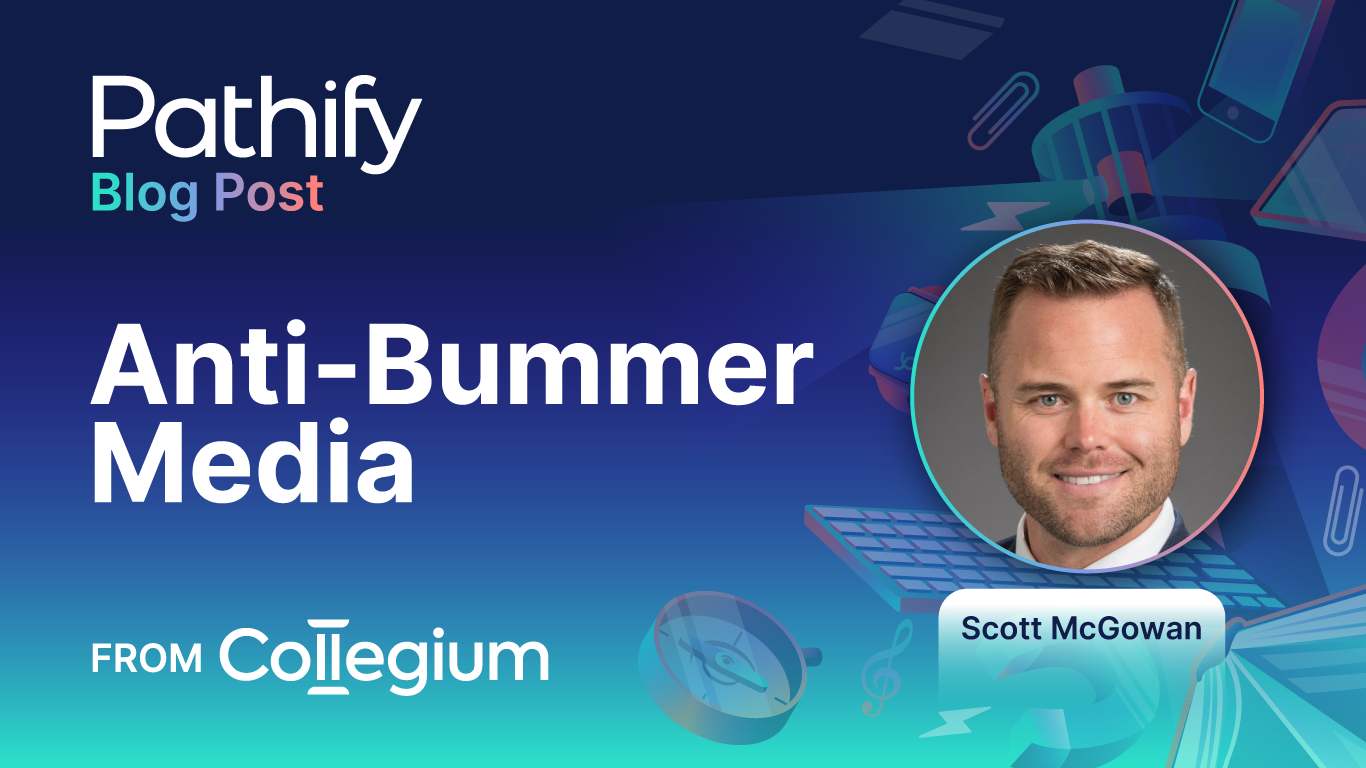Leveraging the right digital tools in building healthier campus cultures
“Today, the average 18-year-old in the United States is on pace to spend 93% of their remaining free time looking at a screen.”
Dino Ambrosi delivers this bombshell stat in his prophetic TED Talk with solemn sadness, going on to argue digital media sucks the life out of life. In his presentation, he particularizes the claims of influential computer philosopher Jaron Lanier, who, as early as 2001, predicted “if we allow our self-congratulatory adoration of technology to distract us from our own contact with each other, then somehow the original agenda has been lost.” Lanier coined the term “bummer media” (Behaviors of Users Modified and Made into Empires for Rent, in case you appreciate a good acronym) to encompass all unhealthy, dehumanizing digital media.
The Digital Age Dilemma
Social media, video streaming and gaming undoubtedly connect people, transmit knowledge and build cognitive skills. They also change our behavior at an astonishing pace (sound familiar? Maybe you’ve seen Netflix’s “The Social Dilemma”). The young people we educate are particularly vulnerable to this — what moral psychologist Dr. Jonathan Haidt calls “The Great Rewiring.”
While Haidt noticed this phenomenon back in 2018, his 2024 bestselling book, “The Anxious Generation,” identifies the tripartite problem — an overly sheltered upbringing, smartphones in every hand and the virtualization of social interactions all significantly and negatively shape Gen Z’s development. You’ve probably long suspected some of these conclusions — seeing them on a college campus is terrifying. In case you missed it, this IS our call to action.
Our Moral Imperative
As higher education professionals, our influence on the future hinges on our impact on young adults. If we succumb to the enormity of the challenges, fear of public pushback or our own media addictions, impersonal algorithms will restrict our ability to make a positive impact. However, suppose we courageously utilize digital information to promote human well-being. In that case, we steer our students toward a vibrant, authentic and connected future, rather than an isolated and uninspiring one.
As the Director of Community Life at Point Loma Nazarene University (PLNU), I encounter the challenging realities outlined in Haidt’s work daily. A photo of an ex with a new partner or a shocking headline unsettles even the most resilient students. This constant exposure drives the sharp rise in demand for mental health services on our campuses. Our response cannot be limited to merely increasing staff at our counseling centers. We must confront upstream causes.
Guiding Responsible Engagement
Continuing to use “bummer media” platforms in conveying campus information raises serious ethical concerns — thankfully, many of my colleagues agree with this assessment. However, while Haidt suggests limiting adolescent exposure to such media, I believe colleges should take a different approach.
Higher education drives development into practice. Our students work and live in a digitally connected world. We must focus on guiding students — and ourselves — towards healthy, responsible use of digital tools. Encouraged by this possibility, our team chose our tool. We chose Pathify.
Combating Bummer Media
We searched for two years, examining and testing various digital solutions. We ultimately selected Pathify because we needed an intuitive, user-centric and adaptable campus portal. A year in, it’s clear we made a good decision. As we continue confronting “bummer media,” Pathify’s comprehensive functionality enhances our ability to foster authentic student connection and development.
Pathify integrates our entire student experience while minimizing screen time. We promote it as the tool providing essential, relevant information for success IRL (in real life). More importantly, Pathify creates structured, healthy spaces for social connections based on specific interests or endeavors. These focused discussions complement and facilitate real-world activities.
Pathify serves as a powerful tool, yet its effectiveness hinges on our vision, partnership and proactive efforts. It requires leadership. At PLNU, we realized institutional leaders aren’t the only ones concerned about this issue — students are, too. They are acutely aware of how “bummer media” is draining their generation. And they are ready to rally around a solution.
Restoring Purpose in Digital Tools
Our strategy centered around involving our 300+ student leaders at key moments. Their passion and courage to think differently and invite their peers to engage in more meaningful digital interactions played a crucial role in our successful launch. Our students are drawn to Pathify for its ability to provide clear, centralized information. They see and share the culture-changing vision.
Earlier, I cited the average youngster is on pace to spend 93% of their remaining lifelong free time looking at a screen. Given this trend, it’s crucial to encourage screen time that self-limits, meets needs and directs users toward the IRL community. Driven by collaborative leadership, Pathify proves it’s the right tool.
Associated Student Body President Colby Douglas represents a growing number of Gen Z students paving a new path at PLNU. He brilliantly commented, “Pathify brings back the central ingredient most digital platforms were created for — being helpful tools that are used when needed, not turning the user into a product.”
With students like Colby and many other influential peers championing this vision on our campus, students are prepared to lead the charge. Embracing leadership, collaborating with conscientious students and leveraging Pathify as a second iteration of media can improve the digital health of your campus community and our shared future.
About the Author
Passionate about the power of mentorship and driving community development, Scott McGowan has spent the last six years as Point Loma Nazarene University’s Director of Community Life. He oversees student leadership training, advises student government and manages the undergraduate student portal experience. Known for his exceptional project and people management skills, Scott holds a bachelor’s degree in Social Science from Point Loma Nazarene University and a Master of Advanced Studies in International Public Policy from UC San Diego. He loves taking his family on sunny adventures all over America’s Finest City, especially to America’s Most Scenic Ballpark.
